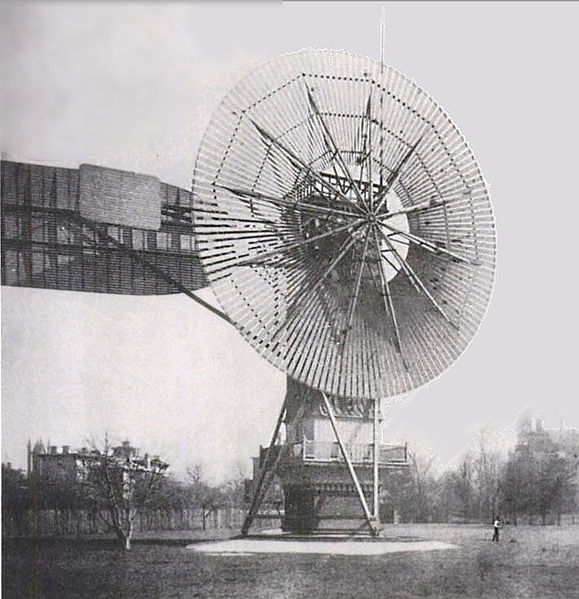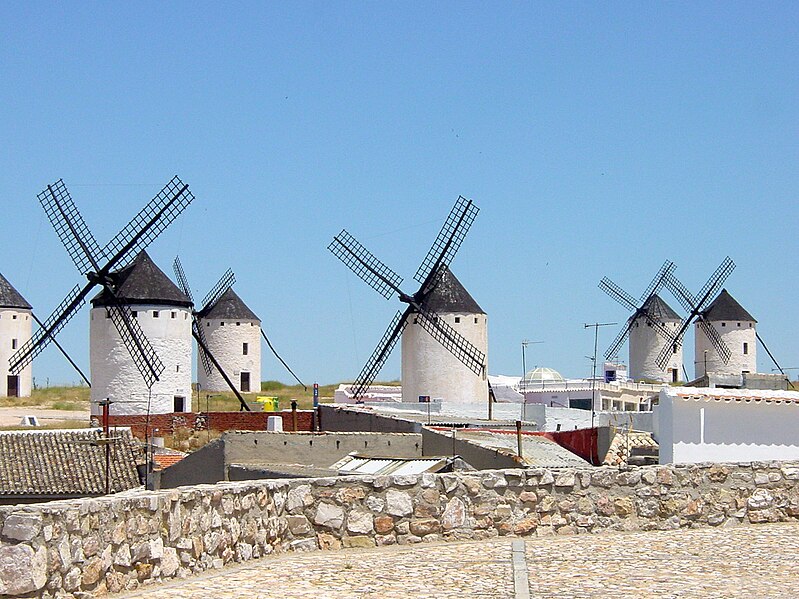
In the US, the development of the "water-pumping windmill" was the major factor in allowing the farming and ranching of vast areas otherwise devoid of readily accessible water. Windpumps contributed to the expansion of rail transport systems throughout the world, by pumping water from water wells for the steam locomotives. The multi-bladed wind turbine atop a lattice tower made of wood or steel was, for many years, a fixture of the landscape throughout rural America. When fitted with generators and battery banks, small wind machines provided electricity to isolated farms.

In July 1887, a Scottish academic, Professor James Blyth, undertook wind power experiments that culminated in a UK patent in 1891. In the US, Charles F. Brush produced electricity using a wind powered machine, starting in the winter of 1887-1888, which powered his home and laboratory until about 1900. In the 1890s, the Danish scientist and inventor Poul la Cour constructed wind turbines to generate electricity, which was then used to produce hydrogen. These were the first of what was to become the modern form of wind turbine.

Small wind turbines for lighting of isolated rural buildings were widespread in the first part of the 20th century. Larger units intended for connection to a distribution network were tried at several locations including Balaklava USSR in 1931 and in a 1.25 megawatt (MW) experimental unit in Vermont in 1941.

The modern wind power industry began in 1979 with the serial production of wind turbines by Danish manufacturers Kuriant, Vestas, Nordtank, and Bonus. These early turbines were small by today's standards, with capacities of 20–30 kW each. Since then, they have increased greatly in size, with the Enercon E-126 capable of delivering up to 7 MW, while wind turbine production has expanded to many countries.









0 comments:
Post a Comment